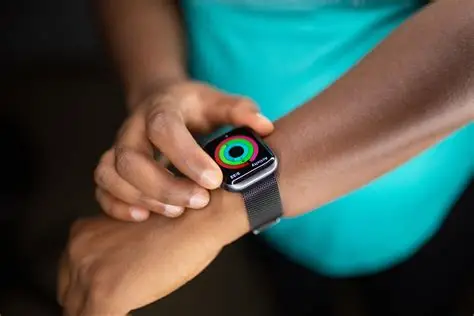Demystifying Your Daily Step Count
Step counting has become a common practice, largely due to the proliferation of fitness trackers and smartphone apps. But what do these numbers really tell us? Let’s examine how your daily steps can translate into valuable insights for your overall well-being.
The Popularity of Tracking
The trend of monitoring fitness metrics has surged in recent years. Data indicates that exercise-related metrics, such as steps and calories burned, are the most frequently tracked, with a considerable portion of mobile users actively engaged in monitoring their physical activity levels. Wearable technology has simplified the process of quantifying our daily movement.
What Are People Monitoring?
The popularity of tracking different aspects of health reveals interesting trends. While exercise metrics are the most commonly monitored, many individuals also track blood pressure, heart rate, weight, and dietary intake. This reflects a broad interest in leveraging data to manage various facets of health.
| Tracked Health Aspect | Percentage of U.S. Mobile Users (March 2024) |
|---|---|
| Exercise (steps, calories, etc.) | 38% |
| Blood pressure & heart rate | 30% |
| Weight or diet | 27% |
Data source: Statista “Most tracked fitness and health aspects among mobile users in the United States as of March 2024”
This data highlights the growing awareness of the importance of proactive health management. The numbers show a clear interest in using technology to monitor and improve various aspects of personal well-being, from physical activity to cardiovascular health and weight management.
Beyond the Raw Numbers
Tracking steps can be a powerful motivator for increasing physical activity. Individuals who use fitness trackers often find themselves walking more and adopting healthier habits. While the raw step count provides a snapshot of daily activity, the true value lies in using this information to understand your activity patterns and make informed choices about your lifestyle.
Harnessing Your Fitness Potential
By incorporating step and activity data into your daily routine, you can gain a deeper understanding of your fitness levels and optimize your approach to health. It’s about going beyond the simple numbers to generate actionable insights that contribute to long-term health improvements. This involves not just recording the data but also analyzing it to identify trends, set goals, and make adjustments to your daily habits.
Understanding Heart Rate Zones for Optimal Workouts
Understanding heart rate zones can revolutionize your fitness routine, transforming each workout into a targeted step toward achieving your specific goals. By learning how to train within these zones, you can maximize the effectiveness of your exercise sessions while minimizing the risk of overexertion and potential injuries. Let’s explore how to make every heartbeat count toward a healthier you.
Decoding Heart Rate Zones
Heart rate zones are defined as ranges calculated as percentages of your maximum heart rate. Each zone corresponds to a different intensity level and utilizes different fuel sources within the body. Lower heart rate zones primarily target fat burning and aerobic development, while higher zones focus on boosting anaerobic capacity and carbohydrate utilization. Monitoring these zones allows you to tailor your training to achieve specific fitness objectives.
Personalizing Your Training Regimen
Knowing your age-predicted maximum heart rate is essential for defining your individual heart rate zones. Wearable fitness trackers make it easier than ever to monitor your heart rate and stay within these optimal ranges during workouts. This ensures that you’re getting the most out of each session, enhancing cardiovascular health, and improving overall endurance.
Achieving Measurable Fitness Goals
By aligning your workouts with your personalized heart rate zones, you can safely and effectively progress toward measurable health and fitness goals. This method is a cornerstone of modern fitness tracking, allowing for optimized performance and a more effective training regimen. It provides a structured approach to exercise, ensuring that you’re working at the right intensity to achieve the desired results.
Unveiling the Science of Sleep Monitoring
Sleep monitoring has advanced significantly, providing valuable insights into your rest and recovery patterns. This information empowers you to understand your sleep cycles and make informed decisions about your overall health and well-being. Let’s delve into the science behind sleep tracking and explore its potential benefits.
Understanding Key Sleep Metrics
Modern sleep trackers utilize a variety of sensors, including accelerometers and heart rate monitors, to gather data during your sleep. These devices analyze sleep duration, sleep stages (light, deep, REM), and overall sleep quality. By tracking these metrics, you can gain a comprehensive understanding of your sleep patterns and identify potential areas for improvement.
The Growth of Sleep Tracker Technology
The market for sleep trackers is expanding rapidly as people recognize the crucial role of sleep in overall wellness. North America currently holds a significant share of the global market. The integration of advanced technologies, such as AI-powered features, is enabling users to adjust their sleep schedules and improve their sleep hygiene.
Benefits of Tracking Your Sleep Patterns
Tracking your sleep can help identify inconsistencies in your sleep schedule, detect potential sleep disturbances, and assess the effectiveness of sleep improvement strategies. These insights enable you to make informed decisions about your sleep habits and seek professional help if needed. This proactive approach can contribute to better overall health and well-being.
Choosing the Right Wearable Device for Your Needs
Selecting the perfect wearable device from the vast array of options can be a daunting task. This guide simplifies the process by focusing on key factors to consider when choosing smart fitness gear, ensuring that you find a device that aligns with your individual needs and budget.
Identifying Your Personal Priorities
The ideal fitness tracker depends heavily on your personal needs and preferences. Are you prioritizing accuracy in tracking health metrics, overall comfort during wear, seamless integration with your smartphone apps, or affordability? Understanding your priorities is the crucial first step in narrowing down the wide selection of available devices.
Key Features and Important Considerations
When evaluating wearable devices, consider factors such as smartphone compatibility, the reliability of health metrics (particularly for sleep and heart rate tracking), and the value of premium features relative to the overall cost. The market is trending toward multi-functional devices that blend fitness tracking with lifestyle convenience and proactive health management.
Emerging Trends in Wearable Technology
Current trends in wearable tech indicate a move towards devices that offer personalized health guidance, such as sleep coaching and recovery analytics. Integration with broader health platforms and enhanced comfort for continuous wear are also becoming increasingly important features for users.
Transforming Workout Logs into Actionable Results
Fitness tracking has evolved beyond simple step counting, offering a wealth of data that can be leveraged to optimize your fitness journey. By understanding how to effectively utilize workout logs, you can transform raw data into actionable insights, leading to more effective and personalized training programs.
Understanding the Fitness App Landscape
The fitness app market is experiencing significant growth, driven by a growing desire for real-time health insights and personalized fitness guidance. Features such as step tracking, heart rate monitoring, and calorie counting are key drivers of user engagement. These tools empower individuals to translate workout logs into concrete plans for improving their fitness routines.
Actionable Insights Derived from Workout Data
Turning workout logs into actionable results involves carefully analyzing the data to identify patterns, trends, and areas for improvement. This includes closely monitoring your progress over time, adjusting the intensity of your workouts based on your heart rate zones, and optimizing your recovery periods to prevent overtraining and potential injuries. Integrating your fitness data with other health and wellness apps can further enhance motivation and provide a more holistic view of your overall health.
Q&A
Question 1: What are the key factors to consider when choosing a wearable fitness device, according to the article?
Answer: When selecting a wearable device, consider your priorities (accuracy, comfort, app integration, affordability), smartphone compatibility, the reliability of health metrics (especially sleep and heart rate), and the value of premium features relative to the cost.
Question 2: How does understanding heart rate zones improve fitness training?
Answer: Knowing your heart rate zones allows you to tailor workouts to specific intensity levels, optimizing fat burning, aerobic development, or anaerobic capacity. This ensures you’re training effectively and minimizing the risk of overexertion, leading to better results and improved cardiovascular health. Different zones utilize different fuel sources (fat vs. carbohydrates).







